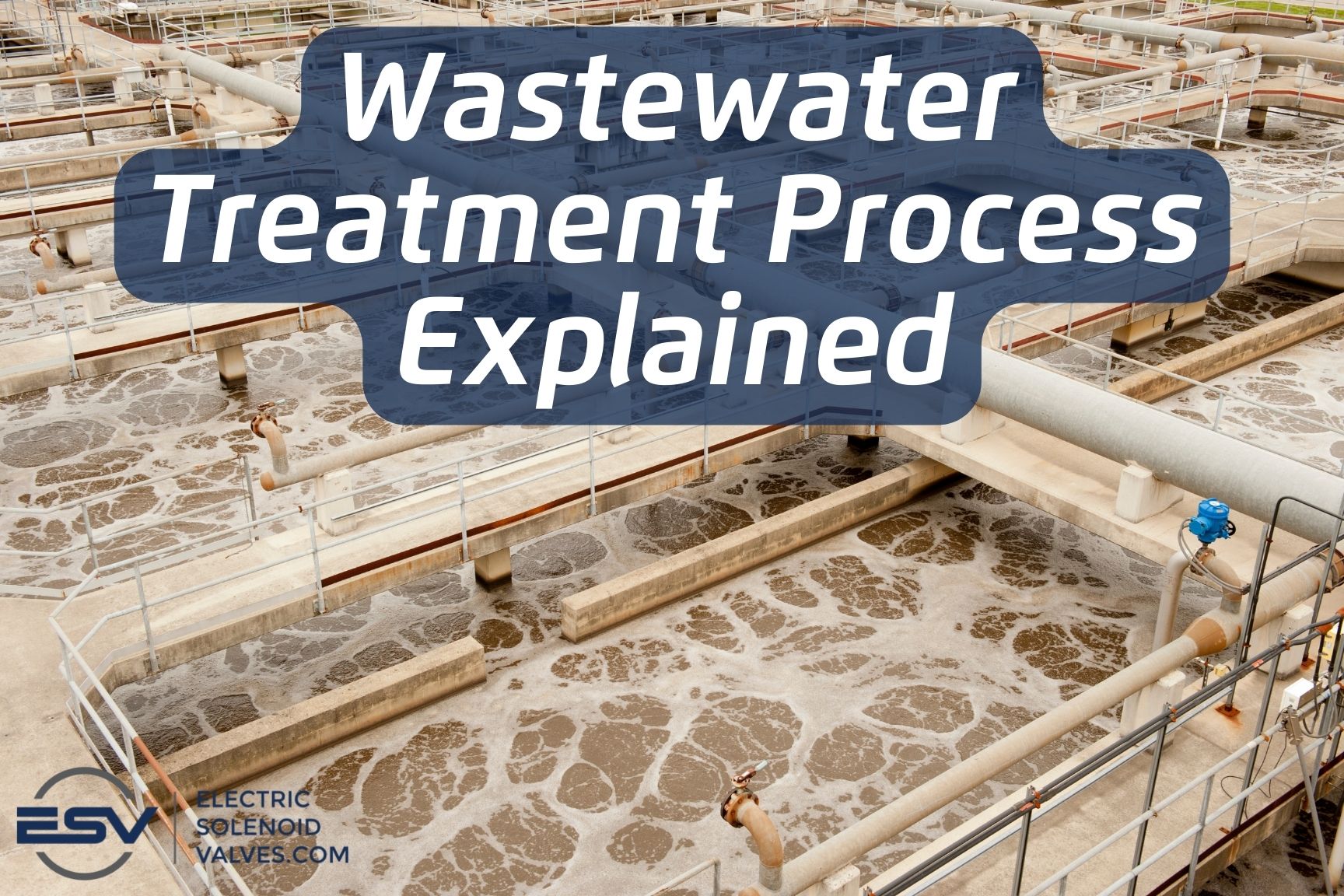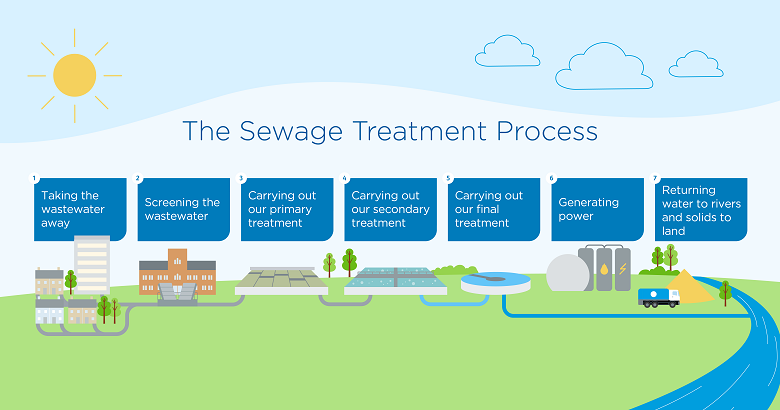Necessary Steps in Community Waste Water Treatment Plants
Necessary Steps in Community Waste Water Treatment Plants
Blog Article
Exploring Cutting-edge Technologies and Practices for Effective Drainage Treatment Equipments
Reliable waste water treatment systems are vital for ecological sustainability and public health. From sophisticated purification methods to smart monitoring systems and biological therapy innovations, the area of waste water therapy is observing a makeover.
Advanced Purification Approaches

Microfiltration includes making use of fine membrane layers to separate fragments and bacteria, while ultrafiltration targets even smaller sized impurities via finer pores. Nanofiltration works on eliminating natural molecules and divalent ions, and reverse osmosis is very reliable in eliminating dissolved salts and various other pollutants. Waste Water Treatment. These approaches not only help in generating clean water but likewise aid in lowering the environmental effect of wastewater discharges, making them essential elements of modern-day wastewater treatment systems

Smart Monitoring Equipments
The application of smart surveillance systems transforms the oversight and monitoring of wastewater treatment procedures, making sure optimal efficiency and compliance with governing requirements. These systems make use of sophisticated sensing units, data analytics, and real-time tracking to provide useful understandings into different specifications of the therapy process. By continually gathering and assessing data on essential indications such as pH levels, turbidity, dissolved oxygen, and circulation prices, smart tracking systems allow drivers to without delay recognize any type of inconsistencies from the desired operating conditions. This positive technique permits for fast treatments to attend to issues before they intensify, eventually boosting the total performance and effectiveness of the treatment plant. Wise tracking systems help with remote monitoring and control, enabling drivers to accessibility real-time data and make informed decisions from anywhere, at any type of time. This degree of connectivity and automation not just boosts operational efficiency however also lowers the danger of non-compliance with environmental laws, causing cost financial savings and environmental management.
Biological Therapy Technologies
Biological therapy developments have actually dramatically advanced the efficiency and sustainability of wastewater treatment procedures. One such advancement is the use of membrane layer bioreactors (MBRs), which combine biological therapy with membrane layer purification to accomplish better treated water in a smaller impact contrasted to traditional approaches. MBRs effectively remove pollutants, solids, and microorganisms, creating effluent that satisfies rigorous governing criteria. An additional noteworthy advancement is the application of bioaugmentation, where specialized microbial cultures are introduced to enhance the degradation of specific toxins, boosting therapy performance. In addition, the growth of created marshes has gained grip as a all-natural and energy-efficient biological treatment remedy. These crafted ecological communities harness marsh plants and microbial procedures to get rid of toxins from wastewater successfully. Generally, biological therapy innovations provide economical, eco-friendly solutions for wastewater treatment, advertising lasting techniques in water source administration. Executing these innovations can result in improved water quality, decreased environmental influence, and improved source healing in wastewater treatment systems.
Energy-Efficient Practices
Beforehand the sustainability of wastewater therapy systems, energy-efficient practices play a crucial function in optimizing functional costs and lowering environmental effect. One key energy-efficient method is the execution of sophisticated oygenation systems, such as fine bubble diffusers or surface aerators, which boost oxygen transfer efficiency in organic treatment procedures. By improving aeration performance, therapy plants can reduce power intake connected with aeration, a considerable contributor to general power use in wastewater therapy.
In addition, the assimilation of renewable resource sources, like solar panels or wind generators, can help counter energy needs and decrease dependence on conventional fossil fuels. Utilizing energy healing systems, such as warm exchangers or biogas catch modern technologies, can additionally add to power financial savings by repurposing waste warm and catching biogas produced during treatment processes.
Furthermore, employing energy management systems and progressed control approaches can maximize power use by changing operational parameters in real-time based on differing therapy conditions. In general, incorporating energy-efficient practices not only lowers functional prices yet additionally lessens the environmental footprint of wastewater treatment centers, lining up with sustainable development goals and governing needs.
Data-Driven Optimization
How can data-driven optimization boost the effectiveness and effectiveness of wastewater therapy systems? Data-driven optimization plays a crucial duty in enhancing the performance of wastewater therapy systems by enabling real-time surveillance, predictive maintenance, and notified decision-making - Waste Water Treatment. By collecting and assessing data from numerous sensors and resources within the treatment plant, drivers can get important understandings into the system's operation, recognize prospective problems before they escalate, and optimize procedures to accomplish better end results
With data-driven optimization, operators can apply anticipating maintenance techniques that help protect against devices failings and decrease downtime. By examining historic information and patterns, maintenance schedules can be maximized, causing cost financial savings and boosted system reliability. In addition, real-time information monitoring permits prompt discovery of anomalies or variances from optimum operating conditions, allowing timely rehabilitative actions to be taken.
Additionally, data-driven optimization assists in data-driven decision-making by offering operators with actionable understandings and suggestions based on information evaluation - Waste Water Treatment. This permits for continuous enhancement and optimization of wastewater therapy procedures, bring about enhanced efficiency, minimized functional prices, and boosted total find this efficiency of the system
Verdict
To conclude, the exploration of ingenious modern technologies and techniques for efficient waste water try this out therapy systems has shown encouraging lead to enhancing purification methods, keeping track of systems, organic treatments, energy efficiency, and data optimization. These advancements are critical in attending to the expanding challenges of water shortage and air pollution. By executing these options, we can ensure lasting and reliable management of wastewater resources for the benefit of both the atmosphere and culture.
From sophisticated filtering techniques to clever monitoring systems and biological therapy innovations, the area of waste water therapy is observing a change.Organic treatment advancements have actually dramatically progressed the effectiveness and sustainability of wastewater therapy processes. In general, biological therapy technologies supply cost-efficient, eco friendly services for wastewater treatment, promoting sustainable methods in water resource administration. By improving aeration performance, therapy plants can lower power intake associated with oygenation, a substantial contributor to general energy usage in wastewater therapy.
In final thought, the expedition of ingenious technologies and practices for effective waste water treatment systems has actually shown encouraging results in boosting filtering methods, monitoring systems, see it here organic therapies, power efficiency, and data optimization.
Report this page